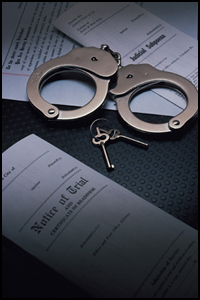Quill Awards
 I enjoyed the Marquette Law Review‘s annual banquet Friday night. United States District Court Judge William Griesbach delivered a thought-provoking talk on “The Joy of Law.” But the personal highlight for me may have been the opportunity, along with my fellow faculty advisor Dan Blinka, to announce the winners of this year’s Golden and Silver Quill Awards for top student comments in the Law Review. The Golden Quill went to Charles Stone for his comment on classical Chinese attitudes regarding what we might now call plagiarism, which was published at 92 Marq. L. Rev. 199. The Silver Quill went to Ben Crouse for his comment on worksite immigration raids, which will be published in the upcoming spring issue of the Law Review (Vol. 92, No. 3). Both of the award-winning comments should be regarded as exemplars of outstanding student scholarship by future generations of Law Review comment-writers. Congratulations to Ben and Charles! Congratulations also to Melissa McCord and her colleagues for presenting such a fine program Friday night.
I enjoyed the Marquette Law Review‘s annual banquet Friday night. United States District Court Judge William Griesbach delivered a thought-provoking talk on “The Joy of Law.” But the personal highlight for me may have been the opportunity, along with my fellow faculty advisor Dan Blinka, to announce the winners of this year’s Golden and Silver Quill Awards for top student comments in the Law Review. The Golden Quill went to Charles Stone for his comment on classical Chinese attitudes regarding what we might now call plagiarism, which was published at 92 Marq. L. Rev. 199. The Silver Quill went to Ben Crouse for his comment on worksite immigration raids, which will be published in the upcoming spring issue of the Law Review (Vol. 92, No. 3). Both of the award-winning comments should be regarded as exemplars of outstanding student scholarship by future generations of Law Review comment-writers. Congratulations to Ben and Charles! Congratulations also to Melissa McCord and her colleagues for presenting such a fine program Friday night.


